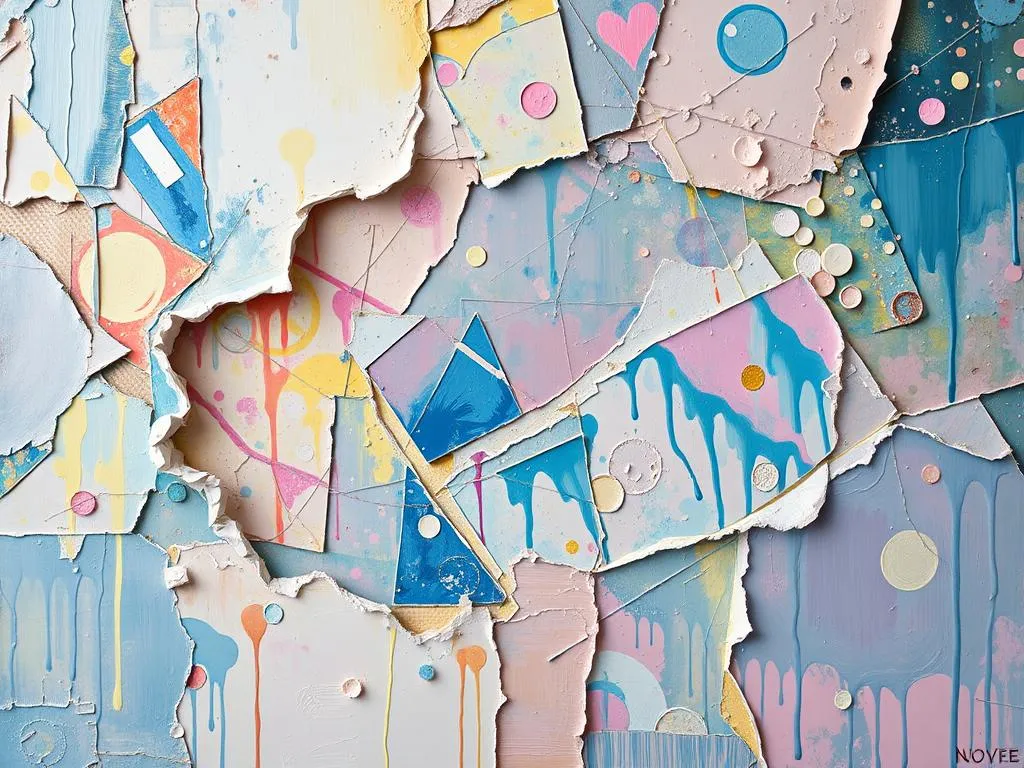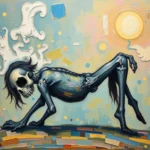
Dreams have long captivated human curiosity, acting as windows into our subconscious and offering insights into our emotional and psychological states. Among the myriad of dream symbols, a torn painting stands out as a particularly compelling motif. This dream can evoke feelings of loss, confusion, or transformation, making it a significant subject for exploration. Understanding the nuances of a torn painting in dreams can help individuals unearth deeper meanings and connect their dream experiences to their waking lives.
Symbolism and Meaning
The torn painting symbolizes a variety of complex feelings and ideas, often relating to one’s emotions, relationships, or personal identity. Art, in dreams, frequently represents the self, creativity, or the way we perceive the world around us. Thus, a torn painting may reflect feelings of fragmentation or incompleteness in one’s life.
One prominent interpretation centers on the concept of loss. A painting, once whole and visually appealing, now marred by rips or tears, might signify a loss of beauty or harmony in a person’s life. This could relate to a specific relationship that has deteriorated or a dream that seems out of reach. The act of tearing can also imply that something valuable has been damaged, whether it’s a cherished memory, a relationship, or a personal aspiration.
Another layer of meaning involves identity and self-expression. The painting can symbolize how individuals perceive themselves or wish to be perceived by others. A torn painting might suggest that the dreamer feels fragmented in their identity or struggles to present a cohesive picture of themselves to the world. This interpretation invites reflection on how external pressures or internal conflicts may distort one’s sense of self.
Additionally, the act of creation plays a crucial role in this symbolism. Art is often a representation of the dreamer’s inner world, and a torn painting may indicate a struggle in the creative process. Perhaps the dreamer is grappling with self-doubt or facing obstacles in expressing their true feelings and ideas. The torn painting serves as a metaphor for the challenges encountered when trying to create or share one’s authentic self.
Moreover, the emotional response elicited by the torn painting can vary widely from person to person. For some, it may evoke feelings of grief or sadness, while others may experience frustration or anger. These emotions can provide essential clues for personal interpretation, as they often reflect the dreamer’s current emotional landscape.
Key Scenarios and Variations
The interpretation of a torn painting dream can shift dramatically based on the context in which it appears. Different scenarios can lead to various insights about the dreamer’s life.
For instance, if the dreamer finds themselves actively tearing the painting, this could indicate a conscious decision to let go of something that no longer serves them. It may suggest a need for transformation, signaling that they are ready to break away from old patterns or beliefs that have been holding them back. This scenario often represents empowerment and the courage to create a new narrative.
Conversely, if the dreamer discovers a torn painting and feels a profound sense of loss or regret, it might point to unresolved issues from the past. This could be related to a relationship that has ended or a goal that remains unfulfilled. In such cases, the dream serves as a poignant reminder to confront these feelings and acknowledge the impact they have on their current life.
Another variation could involve the repair of the torn painting. If the dreamer finds themselves attempting to fix the painting, this may symbolize a desire to mend broken relationships or heal emotional wounds. The act of repair can signify hope and a willingness to work through challenges, emphasizing the importance of perseverance in the face of adversity.
If the painting is torn in a public setting, such as an art gallery or a friend’s home, it may reflect feelings of exposure or vulnerability. The dreamer might feel that their flaws or struggles are visible to others, leading to anxiety about how they are perceived. This scenario encourages exploration of social dynamics and the pressure to maintain a façade of perfection.
Lastly, the emotional responses of others in the dream can also shape its interpretation. If viewers in the dream react with admiration despite the painting’s torn status, this could suggest that imperfections can be embraced and celebrated. It may highlight the value of authenticity over an idealized version of oneself. On the other hand, if others react negatively, it may indicate the dreamer’s fear of judgment or rejection.
Real-Life Connections and Takeaways
Dreams about torn paintings can offer profound insights into one’s waking life, urging individuals to reflect on their feelings, relationships, and personal growth. Recognizing the symbolism inherent in these dreams can lead to valuable self-discovery.
To connect this dream to real life, readers might consider their current emotional state. Are there aspects of their life that feel fragmented or incomplete? What areas of their identity are they struggling to express? Engaging in self-reflection can help unravel the complexities of these feelings. Journaling about emotions related to the dream can be an effective tool for this exploration.
Additionally, examining relationships is crucial. The dream may indicate a need to address unresolved issues, whether with a partner, friend, or family member. Has there been a recent conflict that remains unaddressed? The torn painting could serve as a metaphor for the emotional damage that needs to be mended. Encouraging open communication and vulnerability can facilitate healing and growth.
Furthermore, this dream invites individuals to evaluate their creative outlets. Are they engaging in activities that allow for self-expression? If the dreamer feels creatively blocked, it may be time to reassess their passions and find new ways to channel their feelings. Exploring different forms of art, writing, or other creative endeavors can be a powerful way to reconnect with oneself.
Lastly, the notion of letting go is paramount. The torn painting may urge individuals to consider what they are holding onto that no longer serves them. This could involve letting go of past hurts, toxic relationships, or limiting beliefs. Embracing change and transformation can lead to a more fulfilling and authentic life.
Conclusion
The torn painting serves as a multifaceted symbol within the realm of dreams, reflecting themes of loss, identity, creativity, and the complexities of human emotion. By examining the various interpretations and scenarios associated with this motif, individuals can gain insights into their personal experiences and emotional landscapes.
Encouraging personal reflection is key to understanding these dreams. By exploring the connections between the torn painting and their waking life, readers can uncover valuable lessons and foster personal growth. Ultimately, dreams invite us to engage with our inner selves, offering opportunities for healing, transformation, and deeper understanding of the human experience.







